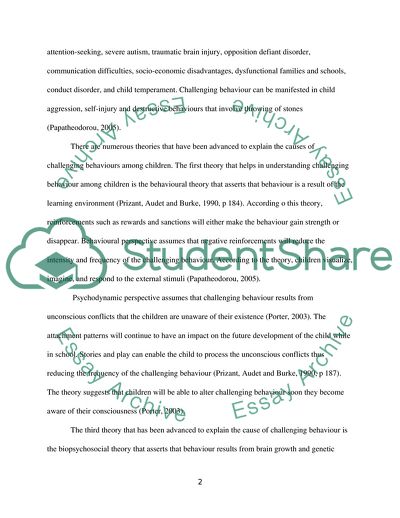Cite this document
(Managing Behaviour in the Primary School Literature review Example | Topics and Well Written Essays - 1500 words, n.d.)
Managing Behaviour in the Primary School Literature review Example | Topics and Well Written Essays - 1500 words. https://studentshare.org/education/1801187-analyse-and-critically-evaluate-some-current-approaches-to-dealing-with-challenging-behaviour-identify-and-evaluate-underlying-theories-within-these-approaches
Managing Behaviour in the Primary School Literature review Example | Topics and Well Written Essays - 1500 words. https://studentshare.org/education/1801187-analyse-and-critically-evaluate-some-current-approaches-to-dealing-with-challenging-behaviour-identify-and-evaluate-underlying-theories-within-these-approaches
(Managing Behaviour in the Primary School Literature Review Example | Topics and Well Written Essays - 1500 Words)
Managing Behaviour in the Primary School Literature Review Example | Topics and Well Written Essays - 1500 Words. https://studentshare.org/education/1801187-analyse-and-critically-evaluate-some-current-approaches-to-dealing-with-challenging-behaviour-identify-and-evaluate-underlying-theories-within-these-approaches.
Managing Behaviour in the Primary School Literature Review Example | Topics and Well Written Essays - 1500 Words. https://studentshare.org/education/1801187-analyse-and-critically-evaluate-some-current-approaches-to-dealing-with-challenging-behaviour-identify-and-evaluate-underlying-theories-within-these-approaches.
“Managing Behaviour in the Primary School Literature Review Example | Topics and Well Written Essays - 1500 Words”. https://studentshare.org/education/1801187-analyse-and-critically-evaluate-some-current-approaches-to-dealing-with-challenging-behaviour-identify-and-evaluate-underlying-theories-within-these-approaches.


